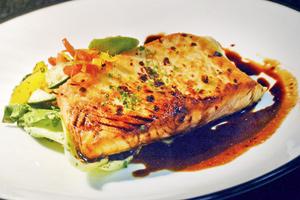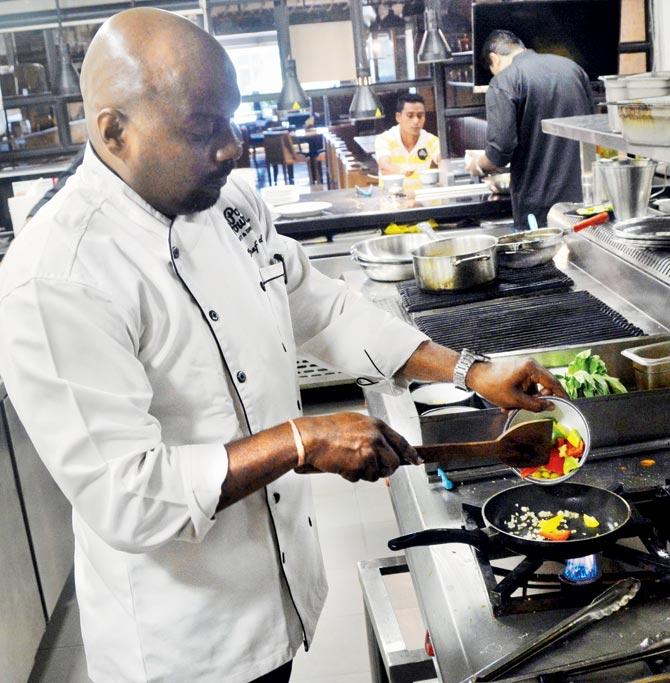Chef Vinod Garde of Sid Hospitality tells us how to achieve that savoury, caramelised crust on your meat


Pic/Sayyed Sameer Abedi
ADVERTISEMENT
It's that time of the year when you want to tuck into meals that are light on the stomach. And if you happen to be an omnivore who doesnt want to forego meat (we plead guilty), chef Vinod Garde, corporate chef, Sid Hospitality has an answer. Sear your meat. "It is a method by which the surface of the food (usually meat, poultry or fish) is cooked at high temperature until a caramelised crust forms. It is an easy way to make meals tempting without using much oil. It lends a depth and complexity of flavour," he says. According to Garde, the technique is best to create grilled meals as it keeps it light and fresh. In fact, if you want to create a full meal, all you have to do is add vegetables or toss some rice that can be cooked along with the meats.
Keep it under wraps
While searing is one of the fundamental cooking techniques, Garde is often asked whether it is necessary to go the extra mile to sear meat before cooking it, or whether meat cooked without searing tastes any different. "It's worth the effort. For one, searing helps develop a crust that seals in the juices to keep the meat moist. Moreover, when the moisture on the surface of the meat evaporates, it undergoes a chemical change that results in a roasted aroma," he says. At Chembur's Pot Pourri, Garde has created pan seared salmon.

Chef Vinod Garde prepares the pan seared salmon. Pic/Sayyed Sameer Abedi
But, you don't necessarily need to head to a restaurant to sample a perfectly cooked, browned piece of meat. It's one of the easiest methods to replicate at home, he believes. "One of the most important things to keep in mind is to ensure sure your pan is hot. Only high temperatures will yield a caramelised, deep-brown sear on the surface of the meat," he says. For this, he suggests using a stainless steel or cast iron skillet; avoid non-stick skillets. It's also important to not crowd the pan. So, if you're cooking one large piece of meat, use a pan large enough to hold it. If you're cooking smaller pieces of meat, like for a stew, leave a few inches of space between the pieces of meat.
No grease, please
The meat can then be coated with a thin layer of oil. "When it comes to searing, the oil is less of a cooking medium and more of a way to get uniform surface contact between the meat and the pan. This will prevent some spots from burning while other spots are still pale," he says.
A common mistake people tend to make is turning the meat too often or too soon. The meat needs a few minutes of uninterrupted contact to sufficiently sear — it will actually stick to the bottom of the pan at first and then release naturally when seared. "It's the best method to elevate the taste of meat while ensuring the nutrients remain intact," he says.
Catch up on all the latest Mumbai news, crime news, current affairs, and also a complete guide on Mumbai from food to things to do and events across the city here. Also download the new mid-day Android and iOS apps to get latest updates
 Subscribe today by clicking the link and stay updated with the latest news!" Click here!
Subscribe today by clicking the link and stay updated with the latest news!" Click here!






